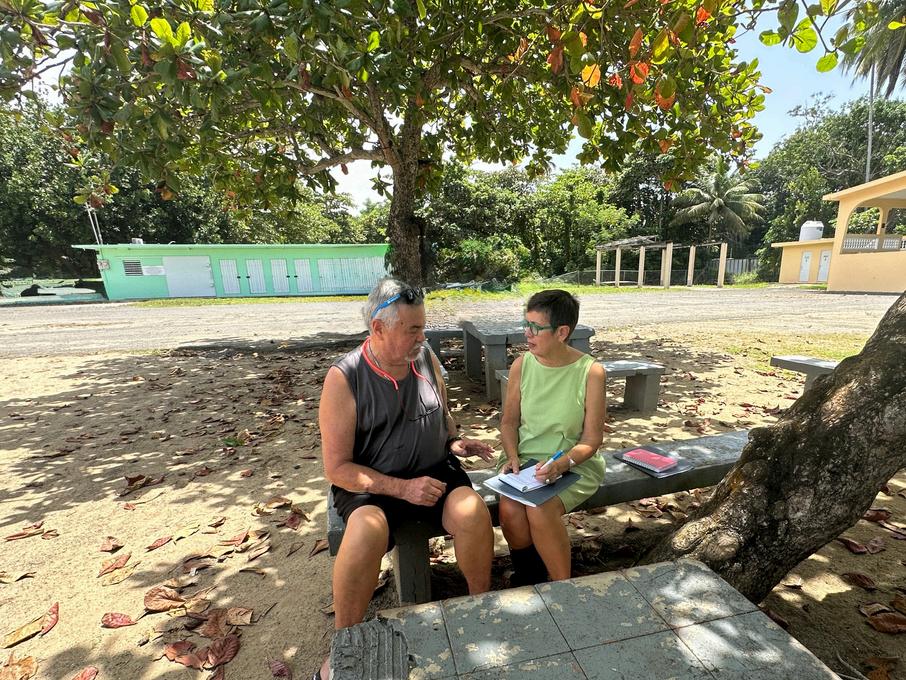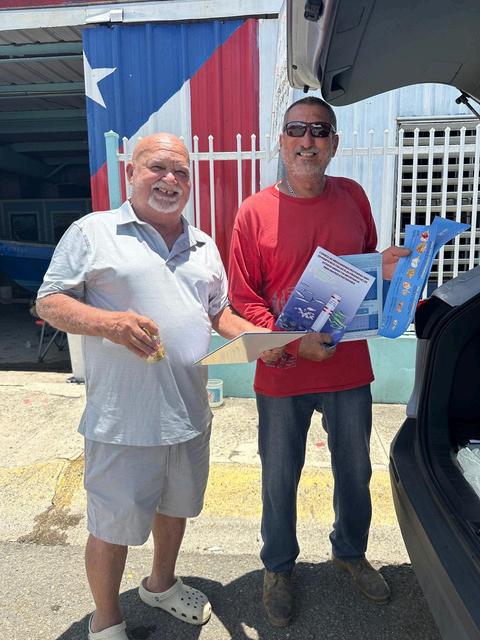CFMC Takes Action
Caribbean Fishery Management Council
CONSERVING, RESTORING AND MANAGING OF FISHERY RESOURCES IN THE US CARIBBEAN
APRIL-JUNE 2025
Vol. 1 No. 2

Newsletter to inform and share the progress of diverse projects that advance the sustainability of the U.S. Caribbean fisheries.
We are proudly highlighting how the CFMC collaborative work is advancing fisheries sustainable management in the US Caribbean by integrating scientific and fishers’ perspectives through the implementation of two projects funded by NOAA Fisheries Let’s learn from the project leaders Héctor J Ruiz Torres, Michelle T Schärer Umpierre, Álida Ortiz Sotomayor and Jannette Ramos García
PROJECT 1:
Local Ecological Knowledge Strengthens Monitoring of Queen Conch and Nassau Grouper Habitats: Environmental Vulnerability Data to Assess the Ecological Needs of Two Species under Recovery Plans

Small-scale fishers from southwestern Puerto Rico are deeply connected with the scientists in the monitoring of key habitats, gathering biological and environmental data, and sharing decades of accumulated experiences.
Fishers collaborate with monitoring and research processes.

Fishers’ good understanding of the ecosystems processes gathered from constant presence at sea and years of experience are impressive, and the success of sharing these perspectives is remarkable. Thanks to these interactions, it has been possible the location of juvenile queen conch (Aliger gigas) critical habitats, on seagrass beds, rocky substrates, and sandy bottoms.
They also contributed to the identification of the frequent conch movements in response to seasonal cues or changes in environmental conditions. Hurricanes Georges (1998) and María (2017) were mentioned as turning points that led to widespread loss of seagrass beds due to sedimentation, and to changes to coastal marine topography. In some areas, fishers understand that habitat recovery remains incomplete even after decades.

Fishers have been highlighting the uptick in Nassau groupers (Epinephelus striatus) in localized rocky and coral reef zones, and the importance of habitat diversity and seasonal shifts in habitat use. These observations are critical in defining habitat vulnerability, in characterizing recruitment areas, and in recognizing the impacts of fisheries management interventions upon these animal populations.
Although fishers rarely use some scientific terms, their experiences reveal a keen awareness of extreme events' consequences. The rise in seawater temperatures, altered seasonal cycles, and increased unpredictability in these two species’ abundances and behaviors have been remarkably noted.
The overwhelming presence of sargassum inundations is a topic of increasing concern. In fact, the growing frequency and intensity of dense sargassum mats and blooms are impacting many coastal zones, impede navigation, limit underwater visibility, increase the water’s acidity, and smother nearshore juvenile habitats. One fisher described how these algal blooms, combined
with freshwater runoff, drastically alter water quality and disrupt the environment for species that rely on good estuarine conditions.
The implementation of this project demonstrates how Local Ecological Knowledge is a form of know-how grounded in experience and environmental consciousness. By having them as data collectors, environmental observers, and co-managers of marine and coastal resources, insight into the past conditions, current state and vulnerability of critical nursery habitats can be introduced.
LOCAL ECOLOGICAL KNOWLEDGE
This is the set of knowledge, practices, and ideas that communities have acquired through their personal experience regarding the ecological relationships of their environment and the organisms that live in it.
Source: https://www ecosur mx/aplicacionde-conocimiento-ecologico-local-para-laconservacion-de-tiburones-y-rayas/
Fishers are helping the team of scientists in building a clearer picture of the complex dynamics and pressures upon essential fish habitats for species of the project interest by:
debulking recruitment adaptation processes in a changing ocean documenting species behaviors understanding patterns in juvenile abundances
exploring environmental shifts (sargassum blooms, warming waters, and post-storm habitat loss)

Therefore, their continuous involvement ensures that both scientific institutions and local communities remain engaged and participate in the research process. Listening to those who work the sea every day not only strengthens the quality of the information collected but also lays the foundation for a more adaptive, inclusive and resilient approach to fisheries governance in the face of changing environments.






